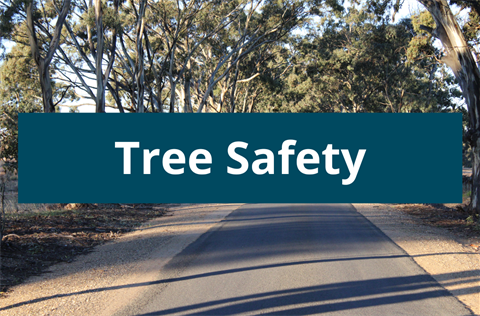Tree Safety
Published on 30 January 2025

Sudden Branch Drop – Tree Safety
It is not uncommon to hear of incidents when large, heavy branches fall from a tree without any warning. Sometimes these events have serious consequences. The question that is always asked is why and whether it could have been predicted and prevented.
The truth is, that even professionally trained and highly experienced arborists are not always able to answer that question. It is one of nature’s inexplicable anomalies as to why a branch unexpectedly falls from a mature and seemingly perfectly healthy, stable tree in calm conditions.
What we understand
We do know that some types of tree are more prone to sudden branch drop such as Ficus (Moreton Bay Fig), Beech, Oak, Sycamore and Eucalyptus. Some of the Eucalypts including River Red Gum, Sugar Gum, Spotted Gum and the Narrow-leafed Peppermint can be particularly susceptible.
The time of year and the age of a tree also appear to be contributing factors. Older trees are more susceptible and sudden branch drop is more likely to happen in the heat of summer – sometimes called ‘summer branch drop.' Branches that fall are typically heavy lateral ones with lots of foliage which extend beyond the main canopy.
In most cases, the limb shears off some way down from the point of junction with the main tree trunk – and the break is usually clean.
There are often no warning signs with sudden branch drop. The tree appears healthy, with no visible cracks or colour changes and no evidence of stress, so it’s impossible to predict if or when it will happen.
Why does it happen
While the causes of sudden branch drop are not clear, there are some theories.
One theory is that high humidity and therefore excess moisture within the canopy of the tree weakens its structure, thus causing the branch to shear.
Another theory suggests that insufficient water – even going back to the early years of a mature tree – could be behind the issue. When a tree has lots of foliage and can’t get enough nutrients and water to meet all its transpiration requirements, it aborts a limb.
Other theories include bacterial issues within the wood, tissue shrinkage and microscopic changes in the cell wall structure.
It is likely that the causes probably include a combination of environmental conditions, the age, health and of course, species of the tree.
It is possible to mitigate some of these issues through inspecting the trees, having the tree pruned to open up its canopy and reduce the risk of high humidity and cut back any riskier branches to reduce the likelihood of them falling. Any work done on trees should be undertaken with the knowledge of how to care for the trees and not just randomly hacking off branches without care.
Keeping Safe
While we all appreciate the shade provided by trees and certainly having trees in our towns help to cool the local environment, there are a few considerations to keeping safe.
Avoid camping directly under trees with large branches. Incidents involving injury and death to campers by falling branches are well documented.
While keeping your car cool and in the shade is a god idea, avoid parking directly under branches that may drop.
When planting trees, consider the placement of the tree near other infrastructure as well.